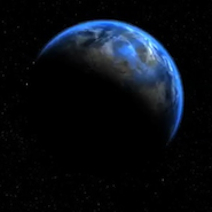Everyone, when looking up at the sky, has probably been amazed by the vastness of our universe. While its ‘size’ seems impossible to assess, scientists have been suggesting that our universe might not be the only one for quite some time already. The news is that now researchers have found a way to prove that this may actually be the case.
Eternal Inflation
The eternal inflation is a scenario describing the possibility that our observable universe might only be a tiny piece of a vast multiverse (a hypothetical set of multiple possible universes), the majority of which is still undergoing accelerated expansion. In this scenario, each universe resides in a single bubble. Theoretically, because of collisions between bubble universes, we might be able to probe the dynamics of eternal inflation thanks to observational cosmology. A team of researchers has recently put forward an observational method to search for bubble collisions, using the cosmic microwave background.
Evidence ?
This team developed a set of algorithms to look for bubble collisions in the cosmic microwave background and applied them to the WMAP (Wilkinson Microwave Anisotropy Probe) 7-year data. Their method is supposed to avoid a posteriori observations, the cosmic microwave background being quite open to them (in other words, you can see in the cosmic microwave background what you want to see, just like the familiar shapes you seem to recognize when looking at random clouds). They were able to find four features in this data that could be bubble collisions. However, they cannot claim a definitive detection and need further evidence. Fortunately, the satellite Planck which has recently been launched will provide much better data allowing to improve the performance of their analysis.
While we will have to wait for further analysis, it looks like we have never been so close to the answer to the question of the existence of other universes.
